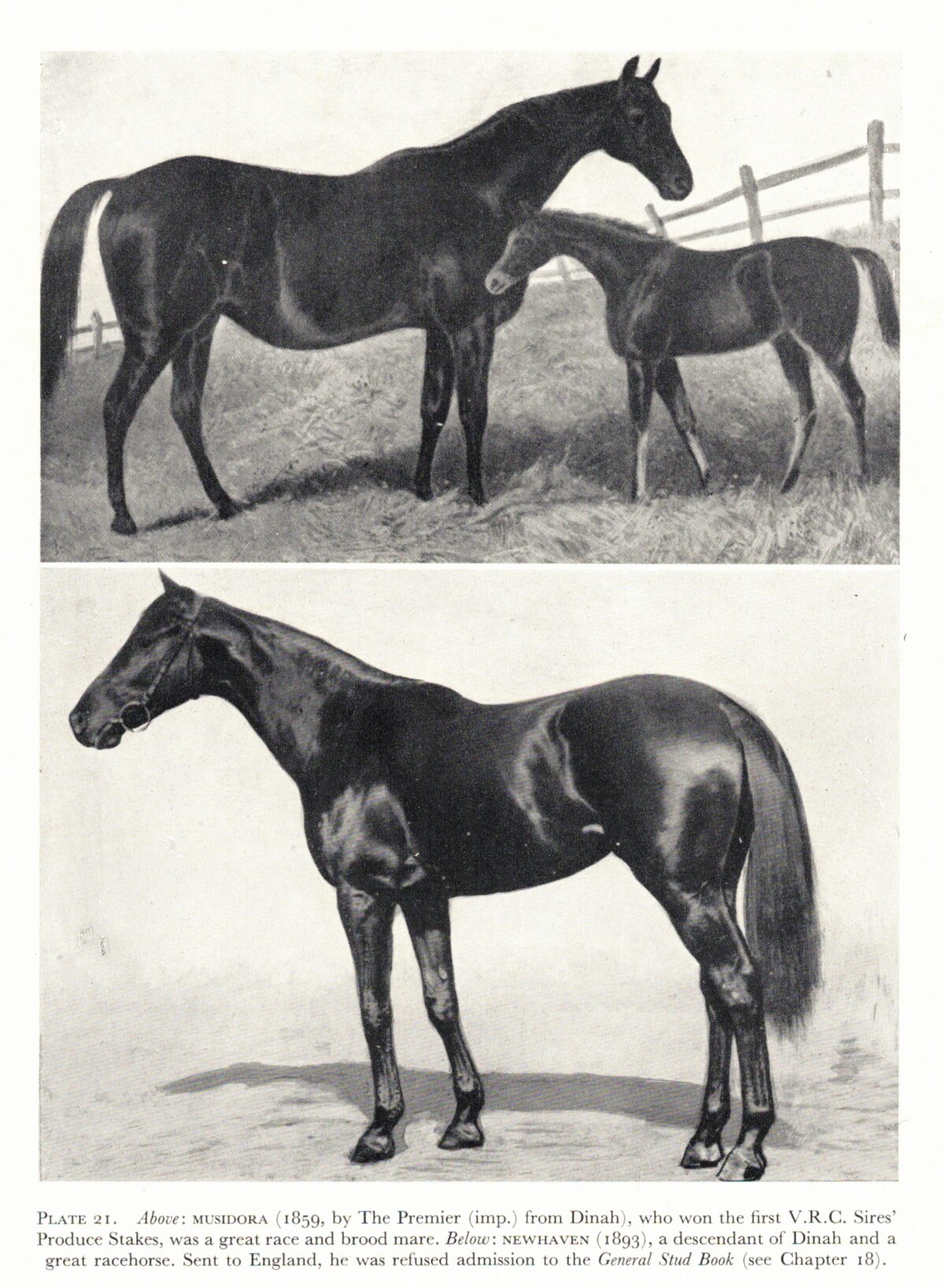The Australian Bloodhorse
Douglas M. Barrie
The Foundation Mares of Australia: Colonial Taproot Mares: ‘The Steeeltrap Mare’ & ‘Sylph’
Featured Image: ‘Spear Chief’ & ‘Wood Nymph’
See also: http://www.tbheritage.com/HistoricDams/ColonFoundMares.html
Douglas M. Barrie’s The Australian Bloodhorse, first published in 1956, is a detailed and exhaustive study of the origins and history of the Australian Racehorse. The product of years of patient research and diligent study it provides an accurate and fascinating guide to thousands of our pure-bred horses since the beginning of settlement. The book fully encompasses and encapsulates the horse’s role in Australia’s development, overlanding, exploration, bushranging, romance and at war.
By 1840 the ‘Thoroughbred Type’ may be said to have been fixed in Australia. The Arab influence steadily declined while the English thoroughbred was judged to be purer in type. Such was the importation of quality horses from the old world, and so favourable had the warm pastures of Australia proved, that by the 1840s thoroughbreds foaled and raised in Australia from sires and dams on Australian Studs were the equal in size, constitution and performance of their imported brethren.
Thoroughbred Sire Lines
All racehorses in the Western World, including Australia trace their sire lines to the three great English foundation sires: Eclipse, Herod and Matchem.
Eclipse: Direct descendent of the Darley Arabian
Herod: From the line of the Byerley Turk
Matchem: Foaled in 1749. Matchem was the earliest of the three English Thoroughbred Foundation Sires and was a grandson of the Godolphin Arabian
It is certain that a number of English thoroughbred mares were bought to Sydney in the very early 1800s although no record now exists of their breeding. ‘Manto’ imported by Mr T Icely to ‘Bungarribee’ in 1825 is the first imported mare known by name and tracing to a taproot in the General Stud Book. The quality of the female line introduced to Australia during the nineteenth century was of a high standard. The majority of our best racehorses are traceable to these matrons even today. Since the importation of ‘Manto’ more than 1600 pure-bred mares (to the 1950s) with a General Stud Book background have been imported to Australia. Many were mediocre but many were equally exceptional.



















